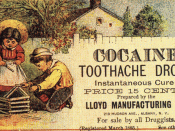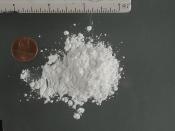It has been estimated by the National Institute on Drug Abuse that every year 40,000 babies are born to mothers who have used cocaine during their pregnancy. Unfortunately, the outcome is unfair for these children, because the mothers do not take into consideration that they are responsible for another person?s life. These children have various levels of deficiencies in the learning process and in the way that they behave. The levels of deficiencies in children vary in accordance with the mother?s consumption of cocaine. Thereby not only are there defects at birth, but also later on in the developmental years. Women who use cocaine while pregnant cause a great damage to their children during the developmental years; especially in the aspects of cognitive motor and social/ behavioral deficiencies.
Cognitive deficiencies are those that deal with an individual?s thinking and reasoning process. These abilities are seen in the beginning school years, not at birth, but are the subtle characteristics that only through the school environment can be recognized.
In a class environment, the deficiencies of a cocaine child are often confused with those of a disruptive child. The underlying truth is: teachers are not able to cope with them on an individual basis and give them more attention.
An initial sign that some children demonstrate is a lack of concentration on virtually every task. Excessive disorganization beyond that of regular children along with being more than just the class nuisance can be characteristics of cocaine-exposed children. While most children are able to stay on task, these children will be easily deterred if given the opportunity. These children tend to exhibit a lack of exploration of the environment which results in less pretend play (Cates, 68). In a study done by Mayes, ?when given a box of toys, for example they [spend]...


